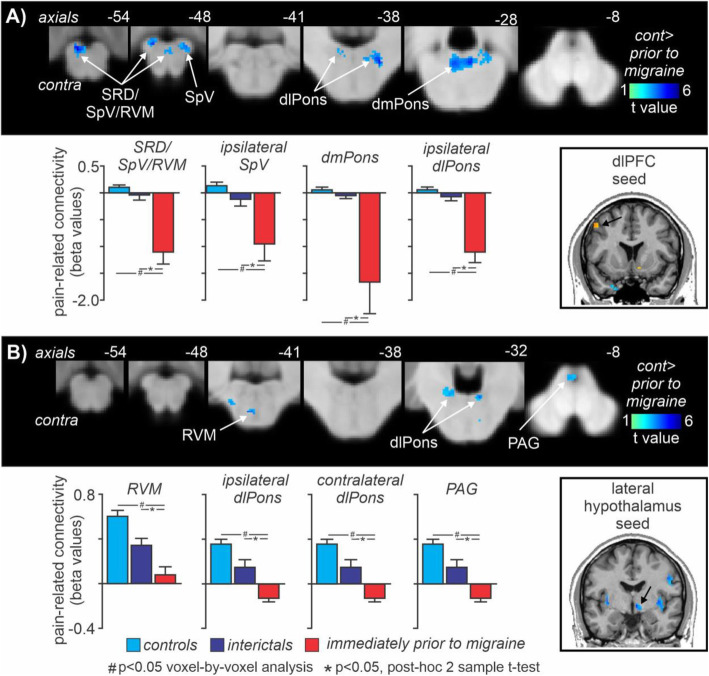Fig. 5.
Pain-related connectivity: Significant differences in (A) contralateral dorsolateral prefrontal cortex (dlPFC) and (B) ipsilateral hypothalamus acute pain-evoked changes in connectivity (psychophysiological interaction analysis) between controls and migraineurs in the period immediately prior to a migraine headache. Significant clusters are overlaid onto a mean T1-weighted brainstem template image. Slice locations in Montreal Neurological Institute space are indicated to the top right of each slice. The dlPFC and hypothalamic seeds are shown in the lower right inset. Note that dlPFC pain-related connectivity strengths were significantly reduced in a number of brainstem regions including the dorsomedial pons (dmPons), dorsolateral pons (dlPons), spinal trigeminal nucleus (SpV), and a cluster encompassing the nucleus reticularis dorsalis (SRD)/SpV and rostral ventromedial medulla (RVM). More restricted pain-related hypothalamic connectivity changes occurred in the dlPons, RVM and also in the region of the midbrain periaqueductal gray matter (PAG). Plots of mean (±SEM) beta values (effect sizes) revealed that pain-related changes in connectivity decreased significantly in migraineurs only during the 24-h period immediately prior to migraine, that is they were not different between controls and migraineurs during the interictal phase

